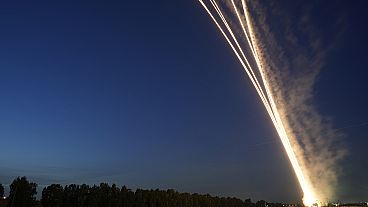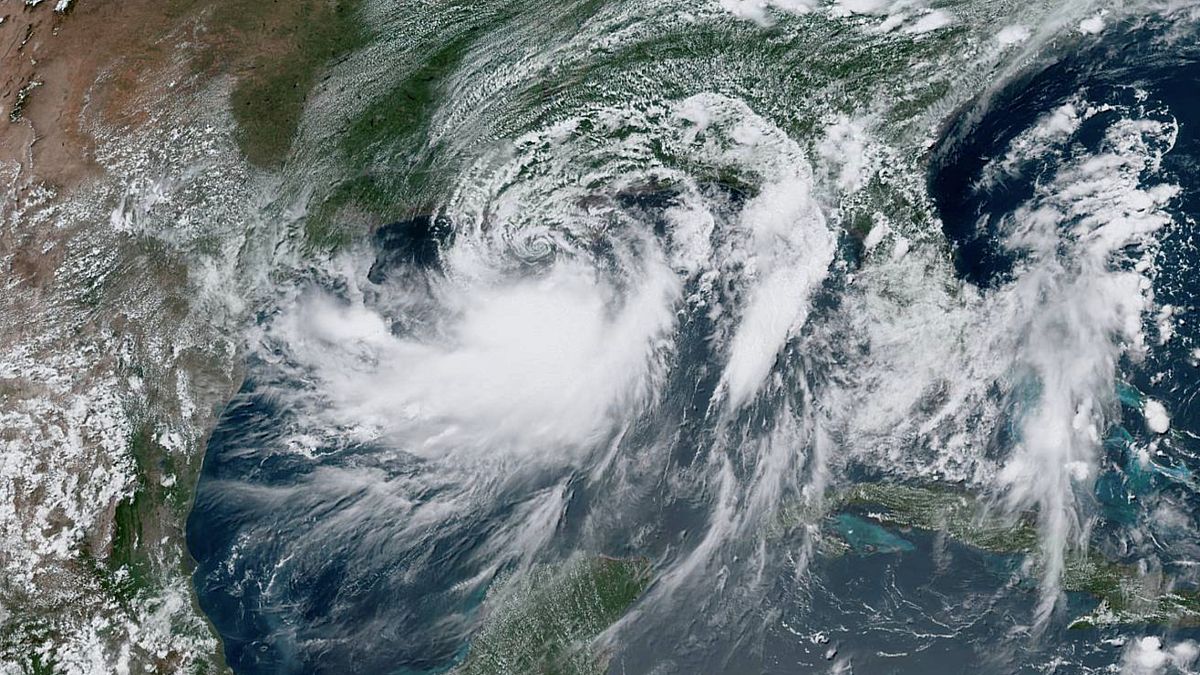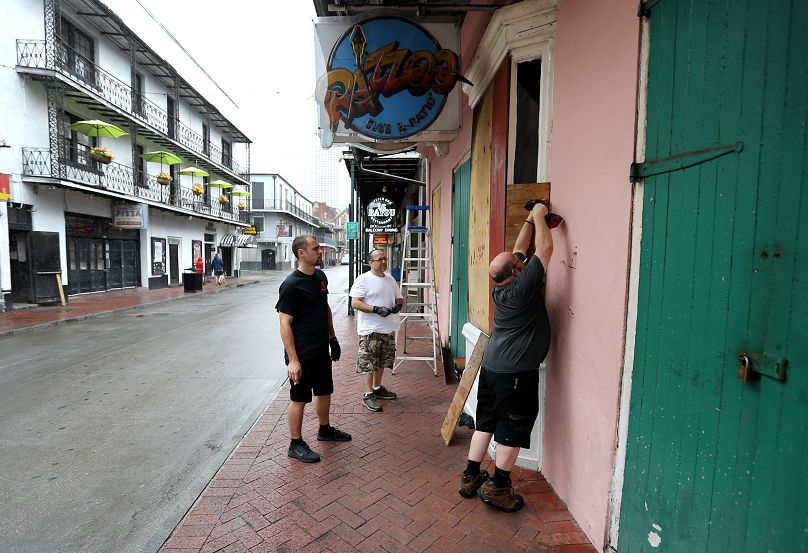Tropical Storm Barry moved closer to landfall on Saturday, threatening millions with rain and high winds and testing New Orleans' flood defences.
Tens of thousands of residents were without power in Louisiana early Saturday as Tropical Storm Barry moved closer to landfall, threatening millions and testing new flood defences in New Orleans.
Property owners boarded up buildings, stocked up on water and braced for torrents of rain and punishing wind.
Officials predicted Barry would make landfall Saturday morning near Morgan City as the first hurricane of the season, with the edges of the storm already lashing Louisiana with rain and leaving some coastal roads underwater.
Though expected to be a weak hurricane, just barely over the 74 mph (119 kph) wind speed threshold, it threatened disastrous flooding across a swath of the Gulf Coast. The storm was expected to inflict the most damage on Louisiana and parts of Mississippi, with wind and rain affecting more than 3 million people.
Late Friday, residents received good news from forecasters: the Mississippi River is expected to crest in New Orleans at about 17.1 feet (5.2 meters) on Monday, not 19 feet (5.8 meters) as had been earlier predicted. The levees protecting the city range from about 20 to 25 feet (6 to 7.5 meters) in height.
Governors declared emergencies in both states, and authorities took unprecedented precautions in closing floodgates and raising the barriers around New Orleans.
Gov. John Bel Edwards said it was the first time all floodgates were sealed in the New Orleans-area Hurricane Risk Reduction System since Katrina. Still, he said he didn't expect the Mississippi River to spill over the levees despite water levels already running abnormally high from heavy spring rains and melting snow upstream.
"My concerns are just hoping it's not going to be another Katrina," said Donald Wells, a restaurant cook in New Orleans.
Authorities told at least 10,000 people in exposed, low-lying areas along the Gulf Coast to leave, but no evacuations were ordered in New Orleans , where officials urged residents to "shelter in place."
Before they did, people packed stores to stock up on bottled water, food and other essentials.
Lifelong New Orleans resident Terrence Williams grabbed supplies at a Costco, saying he has a few simple rules for big storms.
"Stock up on water. Stock up food. Get ready for the storm — ride it out," he said.
Scott Daley, 55, maneuvered two shopping carts filled with bottled water, gallons of milk and frozen meat at a Walmart in Lake Charles, in southwestern Louisiana.
"I've got five small children at the house. So we're just hunkering down," he said.
Rescue crews and about 3,000 National Guard troops were posted around Louisiana with boats, high-water vehicles and helicopters. President Donald Trump declared a federal emergency for Louisiana, authorizing federal agencies to coordinate relief efforts.
Scientists say global warming is responsible for more intense and more frequent storms and flooding, but without extensive study, they cannot directly link a single weather event to the changing climate.
According to Entergy Louisiana's outages map, more than 29,000 customers had been affected by power outages as of 2:11 a.m., local time, Saturday. The biggest outages were in Jefferson, Lafourche, Assumption and Terrebone parishes, all located in southern Louisiana.
The National Weather Service extended tornado warnings in the New Orleans area.



